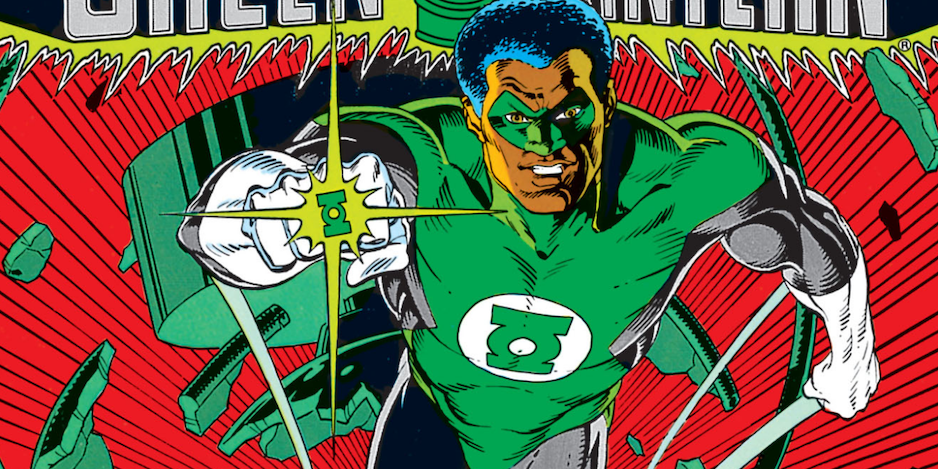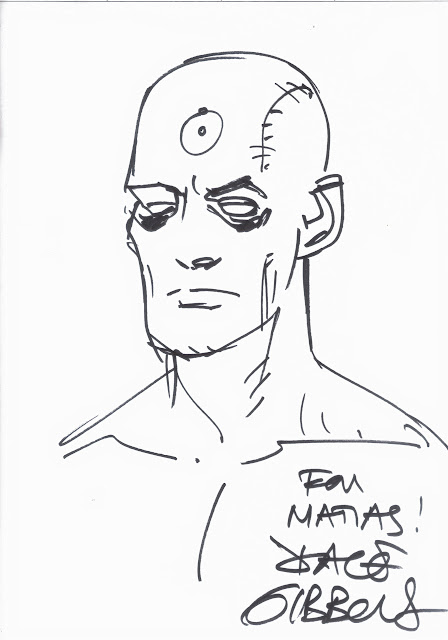
- #Dave gibbons dc watchme full#
- #Dave gibbons dc watchme code#
- #Dave gibbons dc watchme series#
- #Dave gibbons dc watchme free#
#Dave gibbons dc watchme free#
Therefore, unobstructed free capitalism is the only moral society, and the only role of the government is to provide police, armed forces, and objective courts. Speaking of Steve Ditko’s politics.ĭitko was an avowed Objectivist, following the philosophy first espoused by Ayn Rand, which rejects altruism for the individualistic platform that man’s moral obligation is to achieve his own happiness and act as his own judgement determines.
#Dave gibbons dc watchme code#
A fit into Comics Code restrictions, which would make him a much more lucrative project.īoth characters were Ditko’s way of expressing his politics through the superhero metaphor. The reason they seem so similar is that the Question was simply Ditko’s attempt to make Mr. A were both from the pen of writer-artist Steve Ditko, one of the co-creators of Spider-Man.

But unlike his other Silver Age comics contemporaries, he’d leave the occasional criminal to drown if he felt they deserved it. He was a vigilante who also dressed like a 1940s private detective and wore a “pseudoderm” mask that made him appear to be entirely without facial features. Less than a year later, the Question came on the scene, as a backup feature in Blue Beetle.

And, of course, he was the enlightened man who could tell the difference. His calling card was a literal card with a half-black, half-white face, symbolizing his belief that there was no grey area of morality, only good and evil.
#Dave gibbons dc watchme series#
A first appeared in a 1967 issue of the underground comics anthology series witzend, as a vigilante who wore an impassive steel mask and the wardrobe of a 1940s private detective - fedora, suit, and tie - but all in white. Namely, the vigilante detectives known as the Question and Mr. Rorschach owes his ideals, his visual design, and his penchant for violence, to a couple of other characters who were doing the Late-’80s-Batman thing way before Batman. Steve Ditko/witzend Rorschach is based on Mr.
#Dave gibbons dc watchme full#
The schlubby Nite Owl (who evolved from a retread of Blue Beetle) is just as much a Batman analogue as Rorschach, with his nocturnal animal theme, his basement full of gadgets, and his fancy vehicle with its onboard flamethrower. What we consider the foundational texts of our modern idea of Batman - The Dark Knight Returns (1986), Batman: Year One (1987), Alan Moore’s own The Killing Joke (1988) - simply had not been written yet when Watchmen #1 (1985) came on the scene.

The Batman of the early ’80s was darker than his 1960s counterpart, certainly, but he was still gadget-loving and justice-devoted.

Batman smashes through windows to interrogate thugs by breaking ribs and fingers.īut Rorschach isn’t solely based on Batman because Batman wasn’t any of those things when Watchmen was written. Batman’s traumatic past has transformed him into a criminal-hating revenge machine who mistrusts all authority. After all, Batman is exactly the kind of guy who opens a comic by monologuing about how dirty his city is. The Comedian mashed the Peacemaker with Nick Fury.Īnd it would be easy to assume, in this era, that Rorschach is supposed to represent Batman. Doctor Manhattan evolved from a carbon copy of Captain Atom to a parallel for Superman. But when DC editorial decided they’d rather incorporate those characters into the main DC Universe, Moore and artist Dave Gibbons created original characters to evoke similar well-known comic book archetypes. In the early stages of conception, Moore planned for the leads in Watchmen to be heroes from the stable of Charlton Comics, which DC Comics had recently acquired. Left to right and top to bottom, Captain Atom, Blue Beetle, Lady Nightshade, the Peacemaker, the Question, Judo Master, and Sarge Steel, all Charlton Comics characters.


 0 kommentar(er)
0 kommentar(er)
